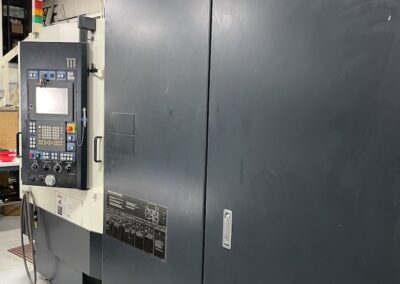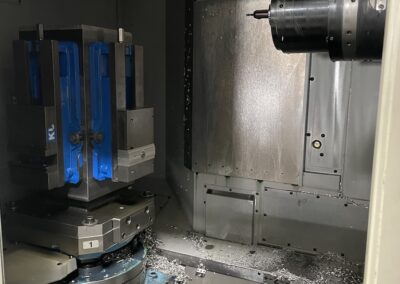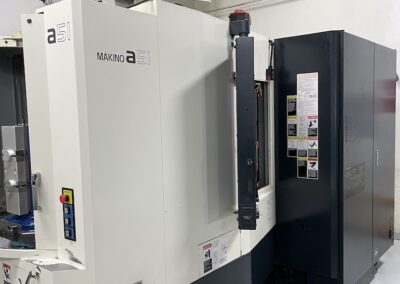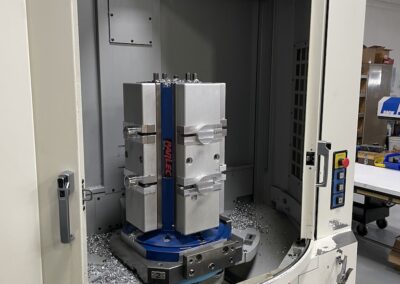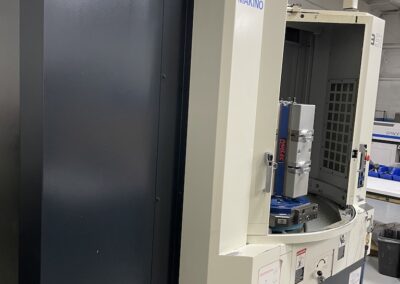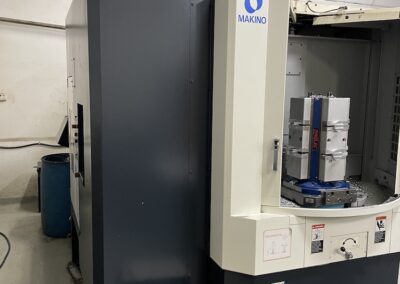Benefits of Horizontal Machining Centers
When we think of a high end machine shop we tend to think of multi-axis mills or intense turn/mills that can reach more or less 9 axes. This is usually where shops like to go when they upgrade their machinery. The biggest reason shops won’t pull the trigger on getting a horizontal machining center is because of the price tag. Even the lower end cnc machine brands can be pretty pricey compared to other machine types. Another reason is they take up the most space so you have to have a decent sized shop to fit one. They also take a lot of power and air to run them. As a job shop it’s scary to drop more or less a million on a machine that might sit for several months while you’re getting the hang of it and finding work for it. It takes a shop that is decently established to be able to purchase something like this. Even then some shops feel like it’s not worth it because them and their customers might not get a good return. They also feel like there’s things they could do to a vertical milling center that would make it similar to a horizontal like installing a pallet changer.
The first benefit you get from a horizontal is the multi-axis capabilities. You are machining on what machinist’s call a tombstone. If you can picture a tombstone turning around in a circle while it sits in the ground, this is how it works in a horizontal. This is the B axis. You can have a part sitting on the tombstone, machine the face of the part, then turn the B axis to machine the side of the part. Another benefit of being able to turn the tombstone is you can have multiple sides. On our machine we can have more or less 8 sides on a tombstone. If you can picture a five foot tall tombstone with multiple sides and multiple parts on each side being clamped down with Mitee Bites you can imagine how many parts you can run and the same time while having multi-axis capabilities. Compared to a 5 axis vertical milling center you are able to fit a lot more parts in a horizontal. One thing machinists run into is having to machine a big part like a mold and having to turn it on its side in a vertical. With a horizontal you can fit a very big part in the machine and machine the face and the side all in one operation.
The second benefit of these machines is chip evacuation. In our Makino specifically there are 14 high pressure coolant spouts and through spindle coolant. On top of that there is what’s called the coolant river at the bottom of the machine that is moving very quickly and gets rid of the chips that fall from the part the second it hits the bottom of the machine. The other nice thing about the horizontal in regards to chip evacuation is gravity is in your favor. On a vertical machining center even with high pressure coolant you can have chips that sit in a pocket for example and cause tool wear and not as nice of a finish.
When it comes to lights out machining usually you think of lathes that are equipped with a bar feeder. Horizontals make it so we can have lights out machining on a mill. We’ve mentioned the ability to be able to fit a lot of small to medium sized parts, also large parts. Our makino is equipped with a tool touch off probe to check for tool wear. Typically on these big horizontals there are a ton of tool slots for more than enough tools. That means you can have back up tools if one tool breaks. That means you can have lights out machining even with tougher aerospace materials.
Where these machines flourish is quick material removal. The reason for this is rigidity. If you compare our Makino that has 30 horsepower vs a new Haas vertical with 50 horsepower the makino horizontal would go through material twice as fast as the Haas. The heavier the machine the more rigid it is. Another thing you want to do with horizontals is dig out the cement where the machine sits and pour new cement a few feet deep to add to that rigidity. If you tried to run a vertical as fast as a horizontal you would get major chatter and tool breakage.
We talked about how there are things you can do to a vertical to make it similar to a horizontal. With the several benefits we mentioned before we find that there are still some things you can’t have with a vertical that you have with a horizontal. The one thing you can do with a vertical is add a pallet changer but is it the same. I would say it’s similar but not totally the same even with an automated pallet changer instead of a manually operated one. Simply because of how much faster it is on a horizontal. Once the machine has finished 6 seconds later it will be machining the next parts. Sometimes we forget how long it takes to load parts while the machine is sitting. With an automatic pallet changer we can be doing two different parts at the same time for two different customers.
We can come to the conclusion that horizontal machining is the way to go for higher production jobs. We are able to make great parts for a good price on these awesome machines. We are able to hold the tightest tolerances without having to baby the machine through the whole job which means we can have one machinist on multiple machines at once while still making quality parts. If you would like to machine your parts on this machine get a quote today and if you’re a first time customer we can do your first job for half off with certain terms and conditions that apply.

